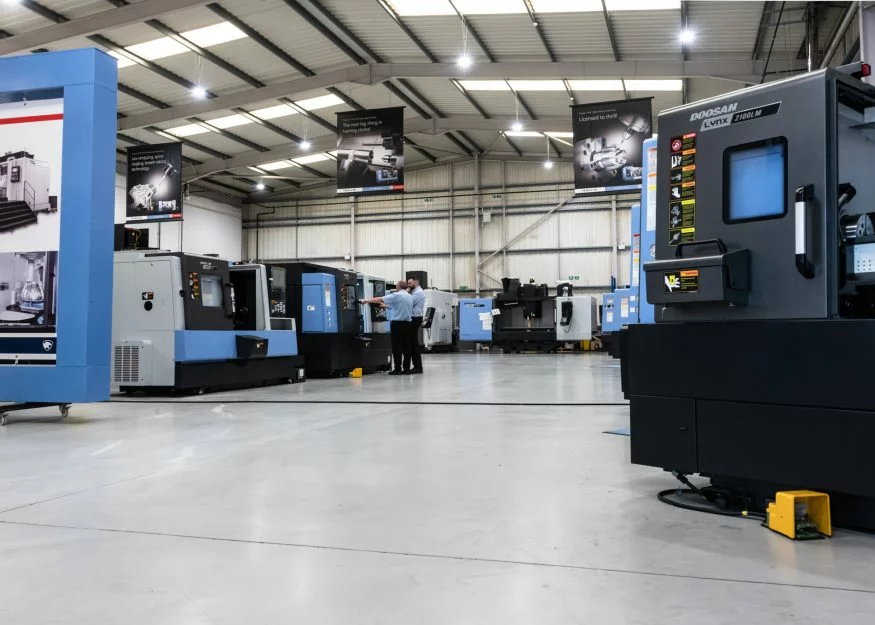In the ever-evolving landscape of global business, infrastructure modernization stands as a cornerstone for organizations that wish to stay competitive and efficient.
As technology progresses at a high speed, companies are increasingly adopting innovative strategies to improve their existing infrastructure. This modernization method ensures that their system aligns with modern standards and capabilities.
In this article, let’s discuss the top strategies businesses use for a modernized infrastructure.
Embracing cloud computing
Cloud computing is evolving to a whole new level. Businesses find this computing method to be highly effective and cost-efficient. It can be a perfect way to enhance the overall IT infrastructure. It can be the best measure for infrastructure modernization.
- Transition to cloud services
Companies are migrating to the cloud at an unprecedented rate. Organizations can gain from this shift in terms of scalable resources, enhanced teamwork, and cost-effectiveness. Businesses can make sure their infrastructure is flexible and ready to adjust to changing needs by moving their data and apps to cloud platforms.
- Cloud-native Development
The creation, deployment, and management of apps are changing due to the transition towards cloud-native programming. With this method, applications are designed with cloud settings in mind, making use of serverless computing, microservices, and containers. Cloud-native development supports a modernized infrastructure by boosting scalability, simplifying application maintenance, and accelerating innovation.
Leveraging data analytics and AI
Modern IT infrastructure includes leveraging proper data analytics and AI. It includes implementing artificial intelligence into your business practices and paying attention to data security and governance as well.
- Implementing advanced analytics
Businesses can enhance decision-making and operational efficiency by converting unstructured data into actionable insights through the application of sophisticated analytics. Businesses may increase their competitive advantage by using advanced analytics technologies to forecast trends, streamline workflows, and customize consumer experiences.
- Integrating artificial intelligence
Artificial intelligence (AI) is revolutionizing the way businesses operate. By integrating AI into their infrastructure, companies can automate routine tasks, enhance customer service through chatbots, and improve decision-making through predictive analytics. AI not only streamlines operations but also unlocks new opportunities for innovation and growth.
- Emphasizing Data Security and Governance
Ensuring data security and governance is crucial in the era of big data. Companies are putting strong data management plans into action that include access restrictions, data encryption, and regulatory compliance.
Prioritizing Cybersecurity
Security is the biggest concern for businesses these days. That’s why modern IT infrastructure adapts a zero-trust security model to safeguard your crucial data against evolving threats and assaults. It also includes options for continuous monitoring and threat detection.
- Adopting a Zero Trust Security Model
To defend against advanced cyber attacks, the conventional security perimeter is no longer sufficient. In response, companies are implementing zero-trust security models, which follow the tenet of “never trust, always verify.” By requiring thorough identity verification of each person and device trying to access the network, this method greatly improves security.
- Continuous monitoring and threat detection
Continuous monitoring and threat identification are crucial in the changing threat landscape of today. Companies are using sophisticated security solutions that use AI and machine learning to instantly detect and neutralize threats. By taking a proactive approach, such breaches are prevented before they have a chance to do a lot of harm.
- Employee training and awareness
Companies are spending money on extensive training initiatives to teach staff members about phishing schemes, cybersecurity best practices, and appropriate data management techniques. Establishing a security-aware culture strengthens the overall security posture and dramatically lowers the likelihood of breaches.
Enhancing connectivity and network infrastructure
Improving connectivity and network-based infrastructures includes taking care of certain elements. It includes options for upgrading high-speed networks, implementing software-defined networking, and investing in edge computing as well.
- Upgrading to High-Speed Networks
Companies are quickly updating their connectivity options to fiber optics and 5G high-speed networks to accommodate higher data volumes and provide quicker access to cloud services. This update makes it easier to communicate, promotes distant work settings, and makes sure that companies can meet the increasing needs of contemporary services and apps.
- Implementing Software-Defined Networking (SDN)
SDN separates network control and forwarding tasks to provide previously unheard-of control over network resources. This enhances network administration efficiency, flexibility, and scalability by enabling administrators to control network services through abstraction layers.
- Investing in Edge Computing
The use of edge computing is growing as a key element in infrastructure remodeling plans. Businesses can maximize performance, lower latency, and improve the user experience for mobile applications and IoT devices by processing data close to the point of data production. Edge computing is a crucial investment because it facilitates real-time data processing for businesses in industries including manufacturing, retail, and healthcare.
Fostering an Agile and Scalable IT Environment
An agile and expandable IT environment in modern infrastructure includes adaptation of DevOps methods, IaC practices, and prioritizing flexible working methods.
- Adopting DevOps Practices
Businesses looking to upgrade their infrastructure must implement DevOps methods. DevOps maximizes product quality, boosts operational efficiency, and expedites application delivery by promoting cooperation between the development and operations teams. Infrastructure is made more flexible and responsive to business demands by this culture and set of techniques, which make use of automation, continuous integration, and continuous delivery.
- Implementing Infrastructure as Code (IaC)
Building an IT system that is more scalable and agile requires the use of infrastructure as code or IaC. Infrastructure provisioning is automated by IaC using a high-level descriptive coding language. Infrastructure that is more dependable and scalable results from this automation, which also reduces the need for manual operations and lowers the possibility of human error. Version control and automated testing also provide consistent environments.
- Prioritizing Scalability and Flexibility
Businesses need to prioritize scalability and flexibility in their IT infrastructure if they want to prosper in this fast-paced market. This requires using scalable storage options, containerization technologies like Docker and Kubernetes, and cloud services. Through the implementation of demand-driven infrastructure, firms can maintain cost management, enhance operational efficiency, and maintain their competitive edge.
Conclusion
Modernizing infrastructure is a complex process that needs careful design and implementation. Through the use of cloud computing, the utilization of AI and data analytics, and an emphasis on cybersecurity, enterprises may guarantee that their infrastructure is resilient, effective, and ready to tackle the obstacles posed by the digital era. For businesses looking to update their infrastructure, the tactics discussed in this article offer a road map that will eventually help them attain increased operational excellence and long-term growth.



